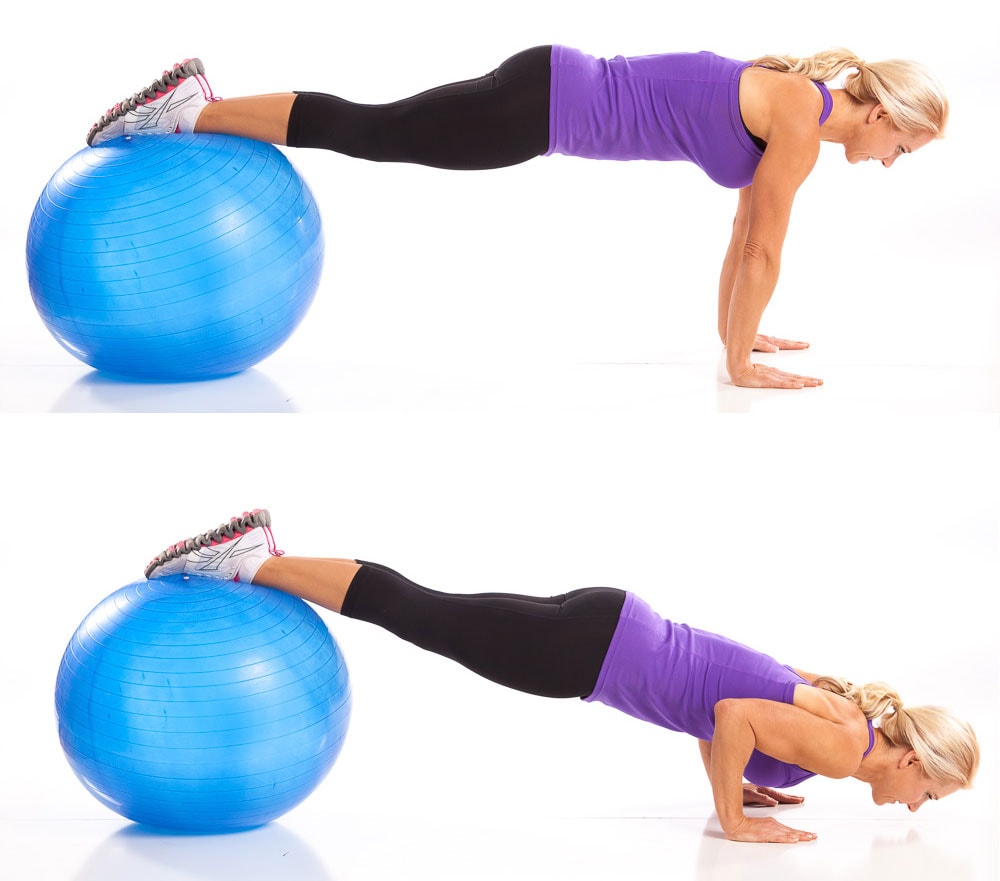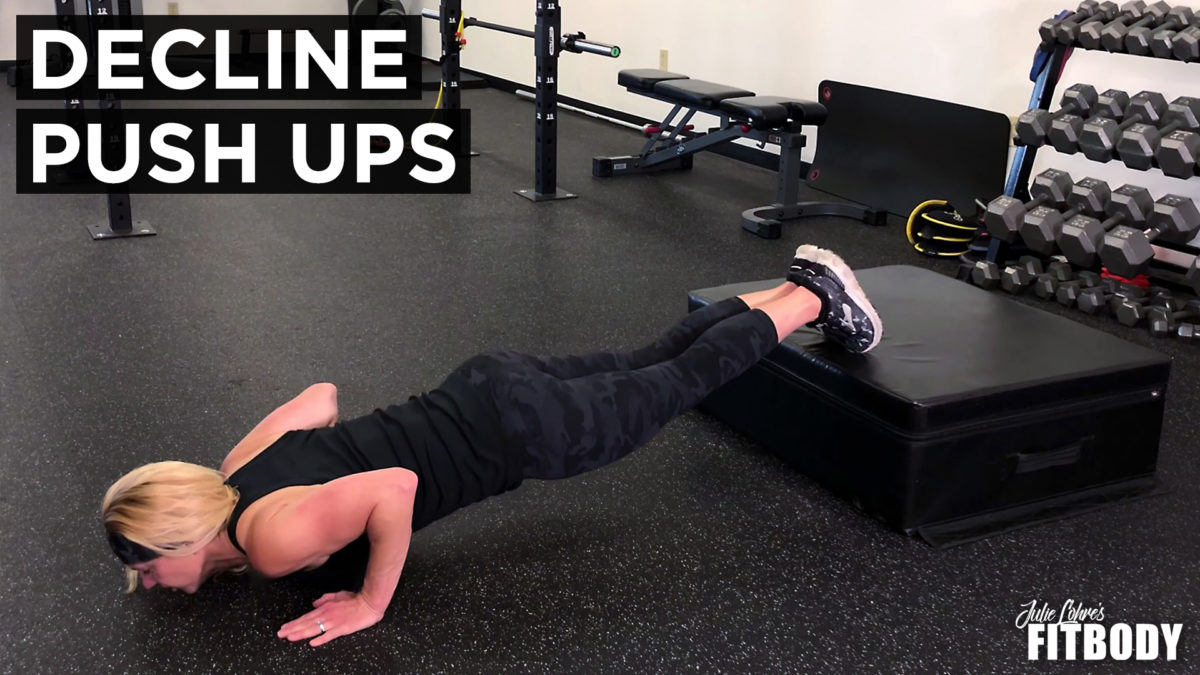Decline Pushup Exercise Demonstration
A decline pushup is an advanced variation of the basic pushup that increases the difficulty significantly by placing your feet higher than your hands. Adjusting the bench height allows you to customize the intensity of your workout using just your body weight.
Do decline push ups work lower chest?
Both variations use your chest, triceps, shoulders and back muscles. However, because of the angle, the Incline Push Up works your lower chest and back more. On the other hand The Decline Push Up works the upper chest and front shoulders (delts) more than the regular or incline variation.
Why do decline push ups?
The pushup is a functional fitness move and different variations will serve you in any pushing motions you encounter in daily life. The decline push up is an intermediate to advanced upper body exercise that targets the muscles of the chest, shoulders, back, and arms but also strengthens your core as well. Holding a plank or hollow body position during this exercise requires a fair amount of strength and stability through the entire core, legs, and back.
What muscles does decline push up work?
Raising your feet up a bit slightly during this exercise changes the angle of the push-up movement, providing a slightly different range of motion. This minor change works the muscles in a whole new way. The decline pushup is one of many different ways you can modify a pushup.
The pec muscles are the prime target of this exercise, however, the height of the bench slightly changes the focus of the muscle group targeted. A higher bench engages the upper head of the pec muscles or your upper chest, but not the lower head of pec. A lower bench focuses on the lower head of pec muscle, but it also engages the upper head of pec major as a coordinating muscle and helps with the overall movement. Other involved muscles that are active during the decline push up include the rear delts and the triceps.
Decline Push Up Step-by-Step Instructions:
Warm up the shoulders and elbows by performing a few basic pushups either on the ground or even against a wall to get into a smooth and steady motion and preparing the muscles for training.
Choose the height of the decline you will use for this movement to elevate your feet. This could be as small as a single step or weight plate or as high as a couple feet. Going much higher than that can compromise your form unless you are an advanced fitness athlete, be careful if you want to lift your feet up to waist high or more.
- Start on your hands and knees on the ground and place your hands on the ground at the sides of your arm pits. You can go a little wider if you like but do not extend the hands too far out to the side or you will limit the effectiveness by limiting the range of motion.
- Place your feet on the elevated object you have chosen carefully and ensure a firm foot placement that will not fail during the exercise.
- Align your body so that you are in a straight plank to slightly hollow body position from tip of head to your toes. No sagging at the hips or belly.
- Reposition your hands for comfort and stability and prepare to complete the exercise.
- Lower your body and chest towards the floor by bending at the elbows, shoulder and wrist joints while maintaining a properly aligned body position.
- As you lower your body, you will need to move your chin up slightly to allow full range of motion and avoid hitting your head on the ground.
- Upon reaching the full lower position, begin to push upwards in a slow and controlled fashion
- While pushing upwards with your arms, you will begin returning your head to neutral and keeping mindful of your body position.
- When you reach full extension stop with arms straight but not “locked out”
- Complete as many reps as you can do without losing form. When you can’t complete a rep with good form, stop, you have reached failure point.
Bad form and other common mistakes:
Pushups are an easy exercise to mess up since you’ve likely been doing them since grade school and are a “seasoned pro” 😉
Allowing your mid section to sag below the anchor points of feet and hands.
Not keeping your core braced and a straight or slightly hollow body, you will compromise your back and possibly cause injury. Often this is due to poor core strength. Using the plank exercise to build core strength is a great way to build proper form for the pushup.
Bad Neck Alignment
While we encourage you to tilt your head up slightly to get the full range of motion, you want to make sure that for 80% of the exercise to be in the neutral neck position with no strain.
Creating Locked Elbows at the top of the range
Always be sure to keep a slight bend in your elbows. Creating a locked out position at the top of the movement places too much stress on the joints and can lead to strain or injury.
If you are having trouble maintaining proper body alignment during normal push ups or when attempting these, you should not start decline pushups. Keep working until you can do about 20 perfect basic pushups or at least a full minute of perfect form plank position. Only then will you be ready to tackle the decline variation.

Sometimes this exercise is called an Elevated Push Up due to your feet being elevated.

